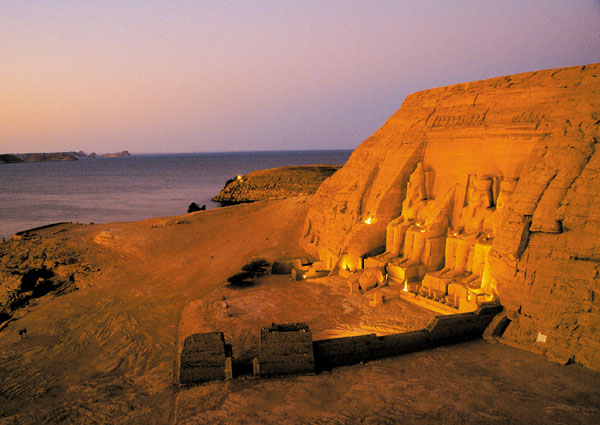Image Details

O. Louis Mazzatenta, Courtesy of the National Geographic Society
Ramesses II gave the simple name Hut Ramesses Meryamun (Temple of Ramesses, Beloved of Amun) to his most spectacular creation: the rock-cut temple of Abu Simbel, on the west bank of the Nile in Upper (southern) Egypt. Four colossal statues of Ramesses guard the entrance. A corridor leads to a large hall, 60 feet long and 50 feet wide, flanked by statues of Ramesses in the guise of Osiris, god of the underworld, and decorated with relief scenes showing the pharaoh’s military victories. In a niche at the back of the temple, more than 200 feet from the entrance, are seated statues of the gods Ptah, Amun, Ramesses (deified) and Re. Twice a year, the rising sun illuminates Ramesses and his divine companions.
In the 1960s, the temple was moved, block by block, 200 feet up the hill to save it from the flooding waters of Lake Nasser, created by the Aswan Dam. The re-builders took pains to orient the temple so that it would receive sunlight in exactly the same way.
